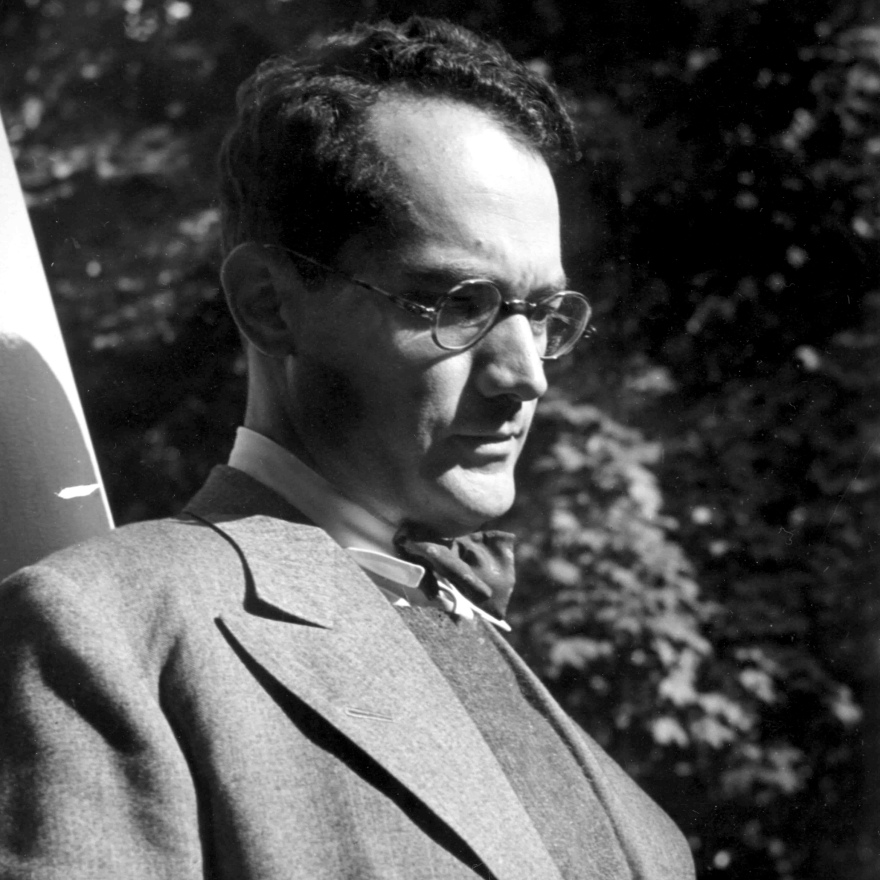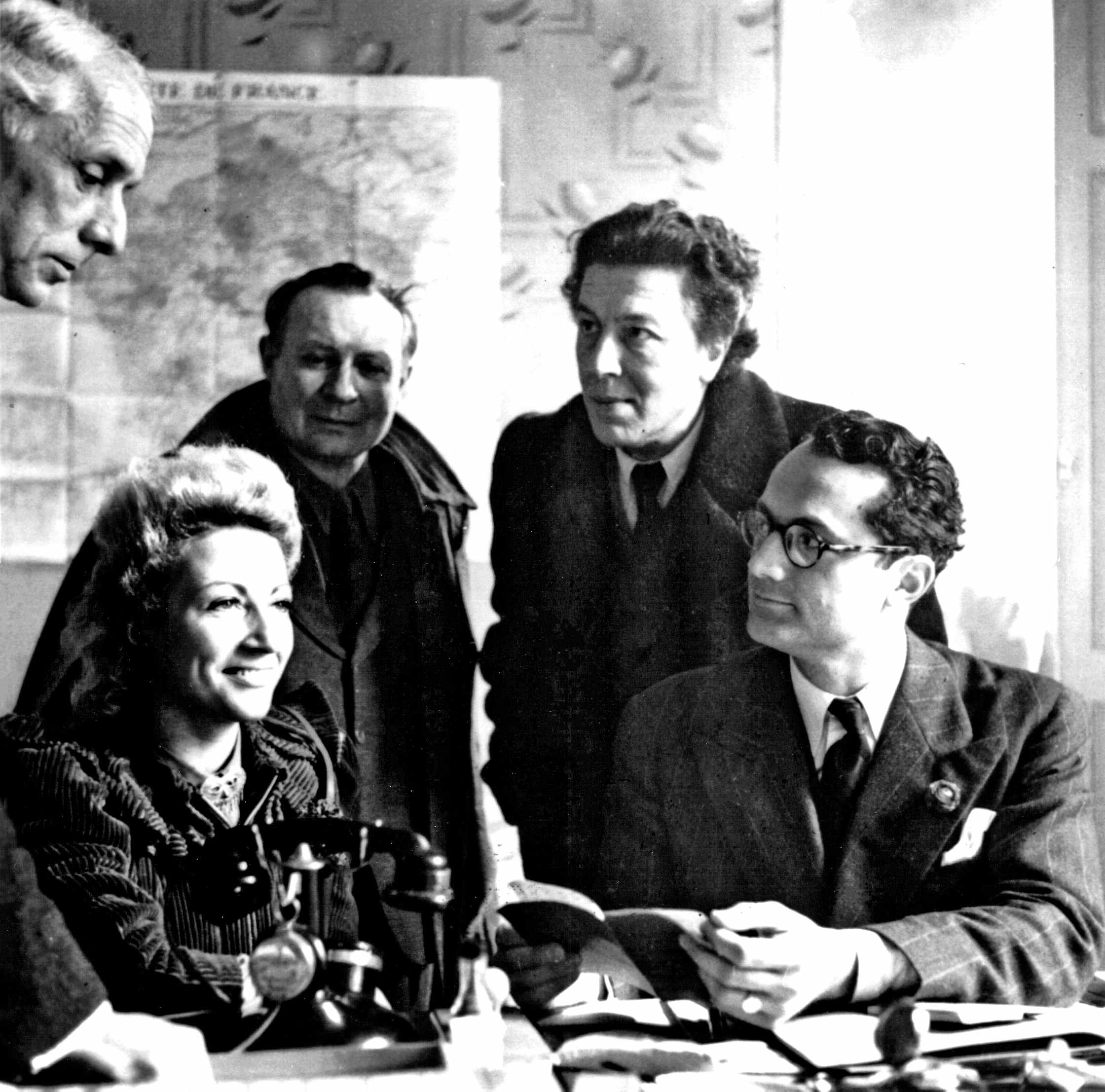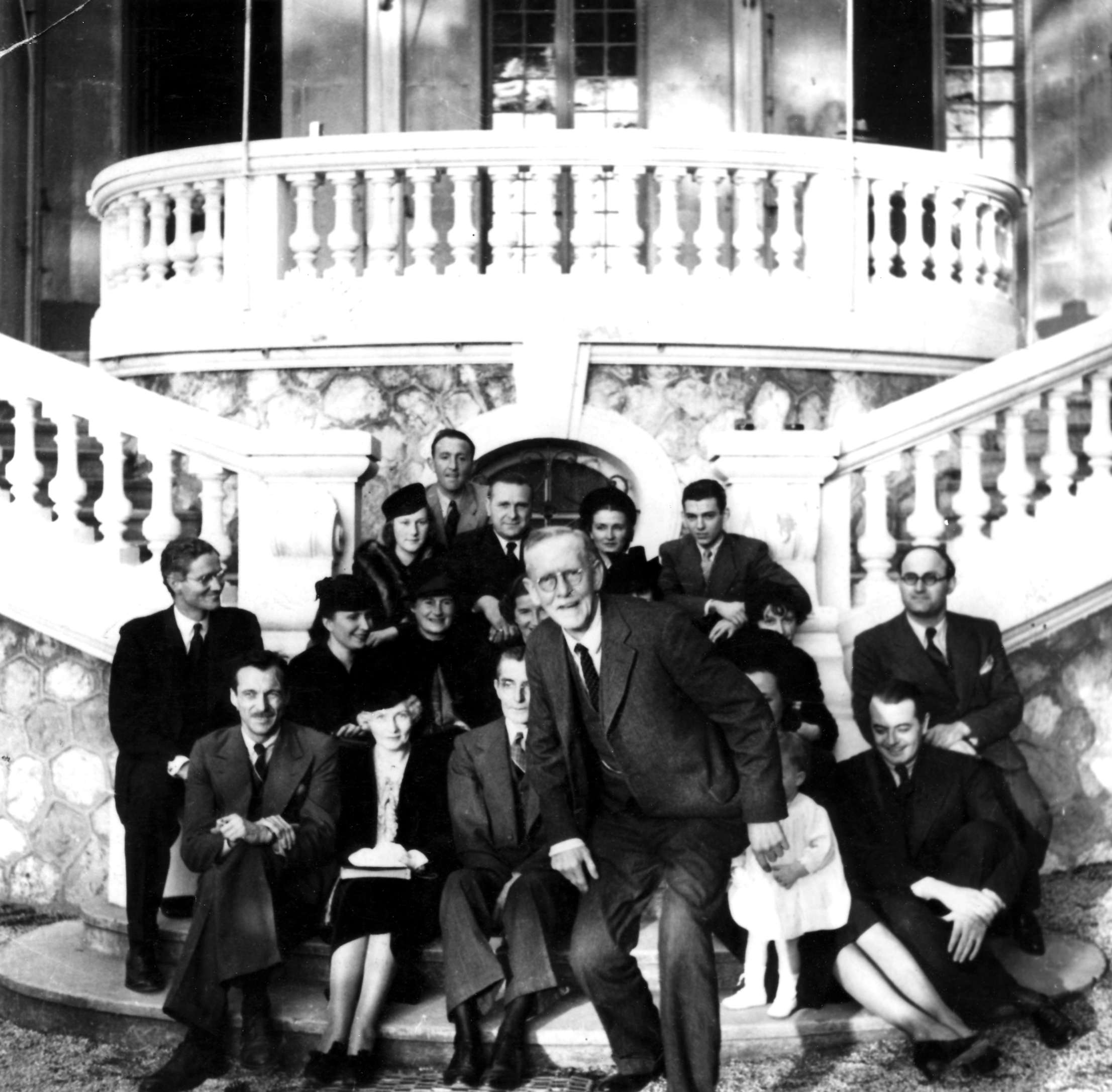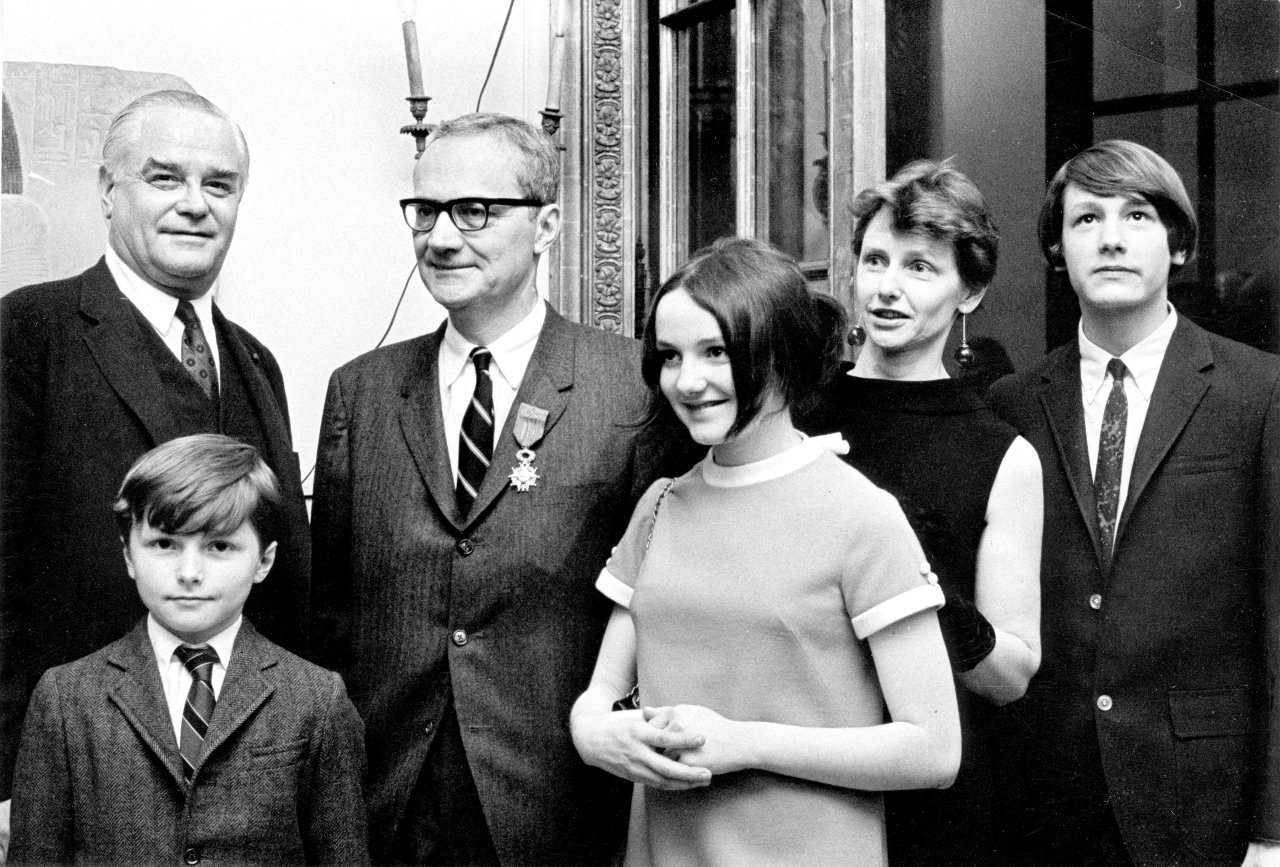Working out of a hotel room in Marseille, and later from a small office, and at great personal risk, Varian Fry and a small team of helpers succeeded in rescuing such well-known figures as Marc Chagall and Hannah Arendt, but also French painter André Masson, German writer Lion Feuchtwanger, sculptor Jacques Lipchitz, filmmaker Max Ophüls, harpsichordist Wanda Landowska, writer Franz Werfel and his legendary wife Alma Mahler Werfel, and André Breton, to name a few. As big an obstacle to Fry’s mission as the pro-Nazi Vichy authorities was the U.S. State Department, which had one of its least finest hours by refusing on-site cooperation – to the point of setting him up for arrest and deporting him from France in 1941, all in the interest of maintaining U.S. neutrality.
Yet Fry hardly came home to a hero’s welcome. For years, his remarkable achievement was virtually ignored in the United States, at first when Americans were deliberately distancing themselves from the growing turmoil in Europe and all its horrifying ramifications, and later because the nation was dealing with its own demons once America joined the war. When Fry published his own account of his French mission in 1945, the book gathered dust on the shelves, unsold. [Surrender on Demand was re-released in 1997 and translated into French in 2017.] It was only in the 1960s that Varian Fry began to gain some deserved recognition as part of a tribute to non-Jewish activists who had rescued people from the Holocaust and who are known collectively as “righteous Gentiles” – such as Oskar Schindler and Raoul Wallenberg.
Fry’s posthumous reputation was further enriched by the 2017 release of a documentary, a long time in the making, by the Emmy-winning French-American filmmaker Pierre Sauvage, who has made studying the efforts of righteous Gentiles his life’s work. Entitled And Crown Thy Good: Varian Fry in Marseille, the film is rich in detail about Fry’s operation and his small team of helpers, mostly Gentiles like himself.
But how did Fry get there in the first place? Not all Americans were indifferent to the consequences of Nazi’s predatory advance across Europe. In 1940, a group of concerned intellectuals met at the Commodore Hotel in New York to discuss the plight of some well-known endangered European artists and thinkers, and what to do about it. In June of that year, the Wehrmacht had circumvented the supposedly impregnable Maginot Line of French defenses, and soon German troops had marched into Paris.
A number of German Jews, political opponents of the Nazis, and artists whom the Nazis denounced as “degenerates” had initially fled to the French capital; now they were on the run again – this time to Southern France, still unoccupied by the Germans. But it was hardly a safe haven. The new Vichy government in the south was for all intents and purposes a puppet government subservient to the Nazis. It was committed to “surrender on demand” (as the armistice agreement with Germany stated) any and all individuals requested by the Gestapo.
In New York, the Commodore Hotel meeting formed an ad-hoc Emergency Rescue Committee (ERC) and drew up a list of 200 prominent names in the arts and sciences who faced the greatest danger and needed to be rescued. Alfred H. Barr Jr., of the Museum of Modern Art, compiled a list of artists; the writer Thomas Mann supplied the names of writers and intellectuals, including his brother Heinrich; the German socialist Karl Frank came forward with the names of fellow party members; and Frank Bohn, of the American Federation of Labor, listed labor leaders. The committee raised 3,000 dollars – a sizable amount at the time – to finance the operation. To carry out the rescue mission the ERC appointed Varian Fry. In truth, the committee had little choice if they wanted their errand of mercy to move forward. Fry was the only applicant.

Today, Fry would probably be described as nerdy. He was mild-mannered, scholarly, bespectacled. The writer Dara Horn, author of a searching article about Fry in the American online magazine Tablet some years back, calls him an “old-time WASP.” At Harvard, he had majored in the classics, and he was certainly bookish. As an editor at the Foreign Policy Association, where he worked on Living Age magazine, a prestigious journal on foreign affairs, he was well-versed in the situation in Europe. He had actually seen it at first hand. Visiting Berlin in 1935, he had witnessed street attacks on Jews outside his hotel, and had written about the incidents for The New York Times.
This experience is often given as a motive behind his desire to take on the ERC’s mission to France. Fry himself, discussing his motivation much later, once articulated it this way: “Among the refugees caught in France were many writers and artists whose work I had enjoyed. Now they were in danger, I felt obliged to help them if I could, just as they, without knowing it, had often in the past helped me.”
In Marseille, Fry settled into the Hôtel Splendide and set up a cover relief agency called the American Center for Relief with the overt purpose of helping refugees financially while also aiding them with visa applications. The hotel soon proved too small for his operation, and he rented an office at 16 Rue Grignan, where he formed a staff of French, American, and refugee colleagues, including Daniel Bénédite, a young French socialist who had worked in the refugee bureau of the Paris prefecture, Daniel Albert Hirschman, a German political refugee (later a ground-breaking economist), Charles Wolff, who died under torture in 1944, and Jean Gemähling, who was arrested in 1941, later released, and who went on to become a high-ranking official in the French Resistance.

Two American women, Miriam Davenport and a wealthy socialite Mary Jayne Gold, were also very helpful members of Fry’s team (Gold’s later memoirs, Crossroads Marseilles 1940 were published by Doubleday where they were edited by Jacqueline Kennedy-Onassis), as was Charles “Charlie” Fawcett, an American wrestler, former Foreign Legionnaire, movie actor, socialite, trumpet player, artist, and global moral adventurer of sorts who would later help resistance movements in Afghanistan and elsewhere.
The overt part of Fry’s operation was to obtain exit visas from the Vichy authorities for what he called his “clients” or “protégés,” and U.S. visas to travel to the United States. The Vichy authorities were slow to hand over refugees to the Nazis: There was, in reality, more demand than surrender. But they were equally slow in granting exit visas, and were not averse to holding foreign suspects in transit camps. Fry overcame this by document forgery on a large scale, and the team included an in-house forger for the purpose.
The United States consulate in Marseille was for much of the time equally unhelpful, partly to stay on the good side of the Vichy government, and also to avoid admitting communists to the U.S., despite the ERC’s policy of not aiding communists. But part of this lack of cooperation was down to the suspicion and distaste that professionals often harbor for amateurs. “The main issue there was everything Fry was doing was against policy,” explained Pierre Sauvage in a phone interview from his office in California. “There is no minimizing how much the U.S. consulate in Marseille loathed him.” There was, however, one vice-consul, Hiram Bingham IV, who went out of his way to support Fry’s mission – helping the people on his list to get visas – and it may have cost him his career.

A well-run clandestine operation carried out Fry’s real work behind the façade and activities of the American Center for Relief. Besides forging documents, Fry set up secret escape routes, changed money on the black market, conspired with gangsters, and chartered ships that sailed illegally – all the while staying one step ahead of the Vichy police, and taking full advantage of their inefficiency and widespread ambivalence towards collaboration with the Nazis. The old, rugged smuggling routes over the Pyrénées, well worn by history, carried a new traffic of souls across the border into Spain, just as less than a decade earlier others had crossed in the opposite direction into France, to escape the Spanish Civil War.
Fry himself acted as guide on more than one occasion, escorting, among others, Heinrich Mann across the border into Spain. His agency also became skilled in extracting people from the various Vichy internment camps. For example, Mary Jayne Gold used her considerable charm to persuade officials to release detainees. A complicating factor for the mission was that while Gold was participating in the rescue effort – and helping to subsidize it – she was also having an affair with a young French gangster. This led Fry to force her to choose between her lover and her work for the committee.
When Marc Chagall was arrested, Fry personally went to the authorities and warned them that the detention of such a world-famous artist would inevitably cause international embarrassment to the Vichy government. Within half an hour, Chagall was released. Fry then arranged for the artist and his wife Bella to travel to the United States.
By 1941 Fry and his colleagues had moved into Villa Air-Bel, an ornate, 18-room mansion in the suburbs discovered by Mary Jayne Gold and Miriam Davenport – a rambling space they occupied with a succession of endangered refugees awaiting departure. Beyond the house was a tranquil Mediterranean view of pine trees and olive branches and beyond that the sea; inside it there was anxiety and tension, and Fry frantically wheeling and dealing in the background. Not all the people he approached wanted his help: Among those who opted to remain in France were Pablo Picasso and Henri Matisse.

In 1941, Fry’s U.S. passport expired, and the State Department got its chance to deliver the coup de grâce: The U.S.A. refused to renew it, and – as his biographers maintain – the American consulate cooperated with the Vichy police to have him detained and in October of that year forced to leave France. His devoted aide Daniel Bénédite took over from Fry, but the American Center for Relief was closed down after another year. His colleagues who were not arrested fled the country. From Spain, as he traveled home, he summed up the experience to his wife. “I have fought a fight, against enormous odds, of which, in spite of the final defeat, I think I can always be proud,” he wrote to the woman he would divorce within a year of his return.
American reaction to his remarkable achievement was a large groundswell of public indifference. Fry received the Croix de Chevalier of the Legion of Honor from the de Gaulle government in April 1967, shortly before his death, but it’s hardly surprising that there was no recognition from his own government, considering how much it had tried to thwart him and the ERC (Secretary of State Cordell Hull had condemned Fry’s and the ERC’s activities “however well-meaning their motives might be”). But somebody in Washington evidently thought otherwise, as Fry was apparently briefly considered for a top post in the newly formed Office of Strategic Services, a forerunner of the CIA. Not surprisingly, nothing came of it. He had made too many enemies in the bureaucracy, and the final decision was that he was too much of a lone operator to fit into the organization.
More surprising, perhaps, was the indifference of his former clients from whom there were no expressions of undying gratitude. In 1966, Fry was invited to Paris to mark the 25th anniversary with an exhibition of works by the artists he had rescued. Repeated requests to Chagall for a painting went unanswered. When the artist eventually sent a lithograph, it was unsigned; and that lack of gratitude was not untypical. Fry died a year later.

Recognition came posthumously. In 1995, Fry was named “Righteous Among Nations” by Yad Vashem, Israel’s Holocaust Memorial – the first American to be awarded that honor reserved for non-Jews who risked their lives to save Jews from the Nazis. A year later, Secretary of State Warren Christopher officially acknowledged Fry’s achievement. Since then books and studies about Fry’s mission have piled up into an extensive bibliography, boosted by a 2017 documentary.
Its maker, Pierre Sauvage, 78, has delved deep into the story of Jewish persecution in France by the Nazis and their Vichy collaborators, and the Gentiles who saved them from the concentration camps. Sauvage works out of a non-profit organization he created, and also runs: the Chambon Foundation, named after the French town in the center of France where he was born to Jewish refugee parents. It is to the Protestant townspeople of Chambon that Sauvage owes his survival from the Holocaust – and that of his parents. Léo and Barbara Sauvage had initially fled to Marseille and had applied for help from the Fry committee – and had been turned down. With their newborn, they survived the Nazi occupation in Chambon and later moved to New York, where for 25 years Léo Sauvage was the correspondent for the French newspaper Le Figaro. His son Pierre paid tribute to his own birthplace in an acclaimed documentary, Weapons of the Spirit (1989).
Sauvage also founded a subsidiary called The Varian Fry Institute, an archive of documents, photos, letters and film footage pertaining to the Fry rescue mission. And Crown Thy Good: Varian Fry in Marseille has been 20 years in the making. Sauvage interviewed many members of Fry’s team. Many of those interviewed have since died, including Charlie Fawcett, Mary Jayne Gold, and Miriam Davenport. (Fry himself had already been dead for some years.) The last two surviving members are a French female secretary, and Justus Rosenberg [who passed in October 2021], a young Polish refugee who was 19 at the time but looked 14 and was the agency’s office boy, often engaged in delivering messages. Blond, blue-eyed and speaking perfect French, he was able to fly under the radar of the Vichy authorities.
Sauvage says his Fry documentary “is fundamentally a story about America – what Americans can do when they are determined.” He also makes the point that Fry’s mission ended before the Nazis put the Final Solution into horrific effect and the mass deportations started in 1941. “The people who were being persecuted (before that) were artists or were anti-Nazis,” he says. In later years, the Vichy government was less selective in rounding up Jews, and more efficient in handing them over to the Nazis, or deporting them.
In hindsight, Varian Fry’s rescue mission has raised curious, nagging questions in some quarters where it has been viewed as selective and elitist. “The premise that lives of the intelligentsia were more valuable than other lives did not seem to raise moral questions for Fry, his coworkers in France, or his colleagues in New York,” wrote the late historian Donna F. Ryan in her book The Holocaust of the Jews of Marseille: The Enforcement of Anti-Semitic Policies in Vichy France (1996). Sauvage disputes this. “I think it’s a bum rap,” he says. “Among Fry and his colleagues the issue came up all the time. Varian Fry was helping people he loved. These people meant a lot to him. You cannot save everybody.” He adds: “The only obligation is to do something. Often the people who complain are doing so to hide the fact that they did nothing.” Something that certainly can’t be said of Varian Fry.
Article published in the October 2016 issue of France-Amérique. Subscribe to the magazine.












